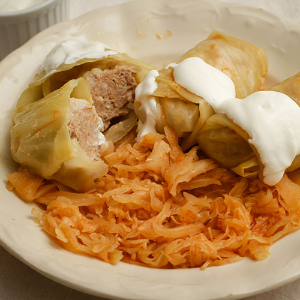When you think of Hungary, you immediately think of Goulash. And Dobos Torte for dessert. But if that’s all you’ve tasted of Hungarian food, you’ve missed out on a lot. Get ready for a culinary road trip to one of the most colourful countries in Eastern Europe!
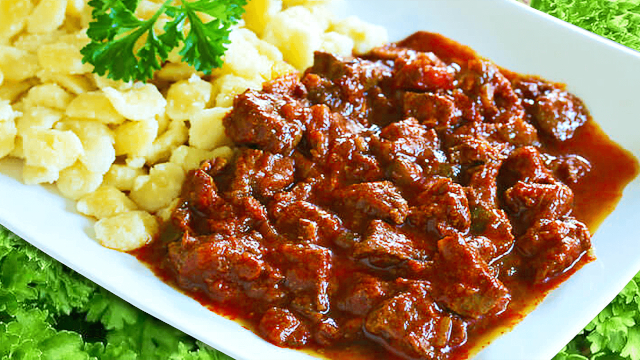 Hungarian Goulash: The country’s national dish, but just the tip of a spicy iceberg…
Hungarian Goulash: The country’s national dish, but just the tip of a spicy iceberg…
Hungarian food is closely associated, around the world, with Paprika. And rightfully so. It’s the element that gives Goulash and Paprikash – and many other Hungarian dishes – their unforgettable flavours. The Hungarians have been culture- and cuisine-building for thousands of years in spite of occupations by a cavalcade of different neighbours starting with the Romans, followed by the Huns, the Goths, the Avars and the Magyars.
The Christian Kingdom of Hungary, ruled by the Árpád dynasty, was established in AD 1000 and lasted until the Mongols invaded in 1241. The next threat to the Hungarian identity was a lengthy European war with the Ottoman Empire, as a result of which Hungary became part of the Austro-Hungarian Empire. The Empire was dissolved in the wake of the First World War and Hungary was once again declared a soverign kingdom. But more than 70 percent of its lands were ceded to neighbouring countries – some established or re-established by post-war treaties. And that’s Hungary as we see it in the present, give or take the German occupation of the Second World War.
So… It’s hardly surprising that Hungarian cuisine reflects a diverse and exotic range of influences!
On our menu today
Like most countries with ancient heritages, Hungary boasts an exceptionally thick national cookbook with thousands of dishes reflecting many different influences. But a distinct Hungarian identity shines through, some aspects of which can be traced back more than 2,000 years.
We’ll get our survey of favourite Hungarian mains started with the dishes you probably already know…
Gulyás (Goulash): Described by natives as a cross between a soup and a stew, Goulash is usually made with beef (though pork or veal may show up from time to time), carrots, potatoes, and a selection of spices featuring – what else? – Paprika. It’s traditionally simmered over an open fire in a large kettle like it was when it first appeared, in the 9th century. It became so popular across the country in the following centuries that it became the national dish of Hungary in the 1880s.
Paprikás and Pörkölt: Paprikás (Paprikash) is really just one variety of Pörkölt, which simply means ‘stew’, a favourite Sunday supper main.
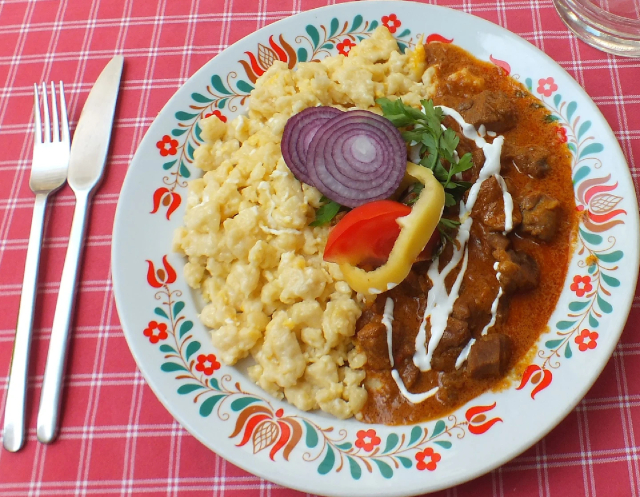
It can be made with almost any kind of meat: beef, pork, lamb, chicken, or even liver. The meat you choose will probably be determined by the region of Hungary in which you live. Whatever the meat, it is always simmered with onions and spices – predominantly Paprika. It’s usually served over nokedli, an egg noodle dumpling that will remind you of German Spätzle.
Töltött Káposzta: These classic Cabbage rolls (see photo, top of page) are made, like their Polish and German cousins, with cooked or pickled cabbage, stuffed with minced meat, rice and onions. Spices employed include lots of Paprika, of course. The rolls are then baked on a bed of saurkraut in a large covered pot or dutch oven. Water or tomato juice are added to create steam which permeates and cooks the rolls. It’s especially popular around the year-end holidays, but is enjoyed as a snack year-round, and can be found on most Hungarian bar food menus.
Túrós Csusza: This popular pasta dish may remind you of Italian Alfredo, but you’ll know it’s something very different when you taste your first forkful.
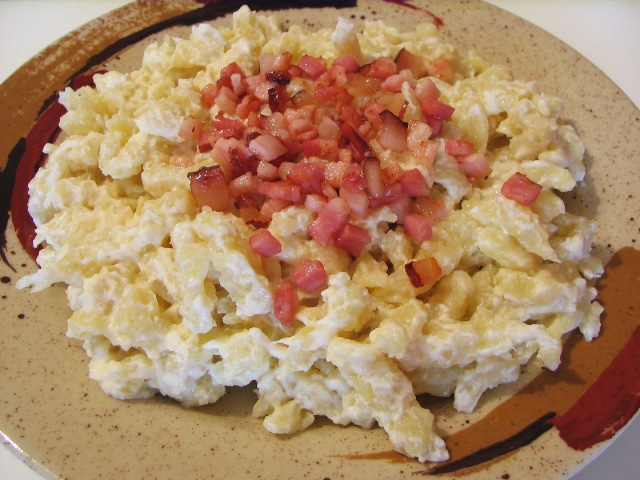
Túrós Csusza is a simple dish made of egg noodles cooked with cottage cheese and crispy bacon bits. It’s popular all over Hungary – probably because it’s quick and easy to make, requires only a few ingredients, and is filling when the whole clan is ravenous.
Lángos: You start with a puffy, deep-fried flatbread and top it with garlic sauce, cheese, sour cream, and maybe even crumbled sausage.
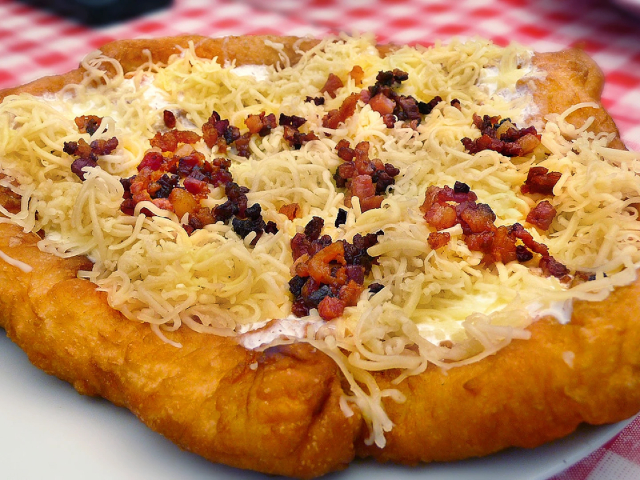
The flatbread, itself, is often considered an alternative to regular bread, and is enjoyed all over Hungary, with all kinds of toppings depending on where in the country you live, and, of course, your personal preferences.
Halászlé: Commonly known as ‘Fisherman’s Soup’, this brothy concoction is traditionally simmered over an open fire in a large kettle, like Goulash.
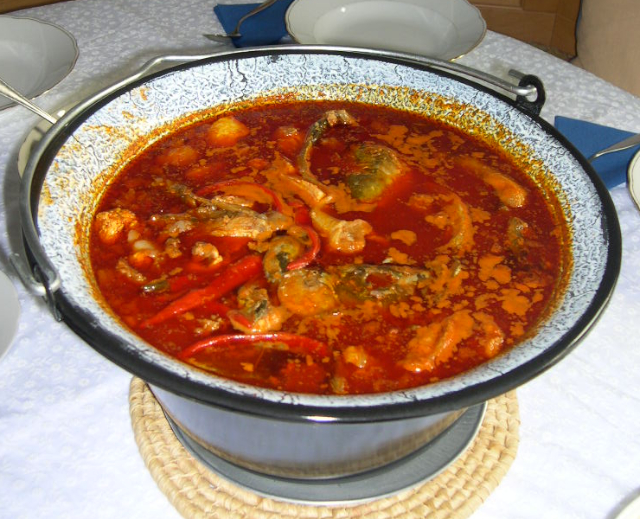
And, like Goulash, it’s considered a Hungarian National dish. Halászlé can be found in a number of regional versions, but all are based on a mix of ‘river fish’ (fresh water species) such as carp, catfish, perch and pike. This spicy soup is characteristically made with multiple tablespoons of sweet red paprika, which imparts a rich red colour to the broth.
Főzelék: Another popular soup – some argue, a rich veggie stew – this one features a creamy, golden base and classic Hungarian veggies. Regional variations may be prepared with potatoes, peas, beans, lentils or carrots. The base is thickened with a mixture of flour and sour cream. (Since sour cream contains a fair amount of butterfat, this substance might be considered a sort of roux.) But, functionally, it’s more like a slurry. Főzelék is so popular that cafés dedicated to it are found all over Hungarian cities, like Sushi bars or Fish and Chips shops in the west.
And that’s your recommended paprika allowance for the week!
Tomorrow, we’ll explore Hungarian Breads and Desserts. And if you thought those from the Land of Paprika didn’t have a sweet tooth, you’ll find you were badly mistaken!
~ Maggie J.

